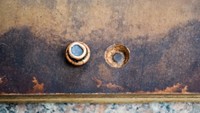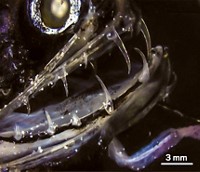Advertisement
Grab your lab coat. Let's get started
Welcome!
Welcome!
Create an account below to get 6 C&EN articles per month, receive newsletters and more - all free.
It seems this is your first time logging in online. Please enter the following information to continue.
As an ACS member you automatically get access to this site. All we need is few more details to create your reading experience.
Not you? Sign in with a different account.
Not you? Sign in with a different account.
ERROR 1
ERROR 1
ERROR 2
ERROR 2
ERROR 2
ERROR 2
ERROR 2
Password and Confirm password must match.
If you have an ACS member number, please enter it here so we can link this account to your membership. (optional)
ERROR 2
ACS values your privacy. By submitting your information, you are gaining access to C&EN and subscribing to our weekly newsletter. We use the information you provide to make your reading experience better, and we will never sell your data to third party members.
Materials
The Secret Strength Of Mollusk Shell
Bivalve gets protection from shell that resists penetration via deformation twinning
by Bethany Halford
March 31, 2014
| A version of this story appeared in
Volume 92, Issue 13
The windowpane oyster, known to scientists as the bivalve Placuna placenta, gets its name from its remarkable shell, which is transparent enough to read through. The shell is 99% calcite, the most stable polymorph of CaCO3. One might think that this high mineral content would make P. placenta’s shell brittle, but the shell is about 10 times more likely to resist penetration than single-crystal calcite from a geological source. MIT researchers Christine Ortiz and Ling Li decided to find out why. They made small indentations in P. placenta shell and geological calcite and compared the two using various types of microscopy (Nat. Mater. 2014, DOI: 10.1038/nmat3920 ). Compared with geological calcite, Ortiz and Li note, “P. placenta fractures in a more graceful way.” When indented, geological calcite tends to crack, but the mollusk shell dissipates energy via deformation twinning, a process by which a crystal’s atoms move ever so slightly such that the solid forms crystal twins. Twins are pairs of adjacent crystalline domains that are slightly misoriented with respect to one another. Ortiz and Li propose that the phenomenon might help design lightweight armor that resists penetration.





Join the conversation
Contact the reporter
Submit a Letter to the Editor for publication
Engage with us on Twitter